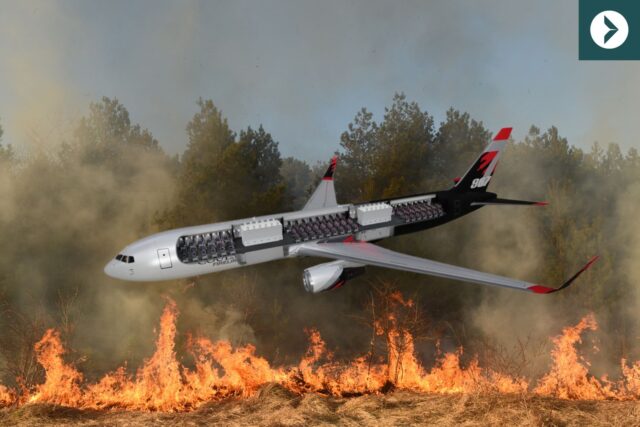DARPA X-plane program selects Bell for next-phase VTOL demonstrator

July 9, 2025

Bell Textron has moved a step closer to demonstrating a high-speed, runway-independent vertical takeoff and landing (VTOL) aircraft that could redefine future US military air mobility.
Bell Textron has been selected for Phase 2 of the Defence Advanced Research Projects Agency’s (DARPA) Speed and Runway Independent Technologies (SPRINT) programme.
In Phase 2, Bell will build and ground-test its X-plane design, with flight testing expected in the programme’s final phase.
Bell Textron’s X-plane is set to fly for DARPA SPRINT
The SPRINT programme, launched by DARPA in 2022, aims to develop an experimental X-plane capable of achieving jet-like speeds of 400 to 450 knots while retaining the ability to take off and land vertically from unprepared surfaces.

The objective is to bridge the gap between the speed and range of traditional fixed-wing aircraft and the operational flexibility of helicopters.
“Bell is honoured to have been selected for the next phase of DARPA’s SPRINT programme and is excited to demonstrate a brand-new aircraft with the first-ever stop/fold technology,” says Jason Hurst, Executive Vice President, Engineering.
The stop/fold rotor approach
At the centre of Bell’s proposal is its ‘stop/fold’ rotor system, a novel configuration that enables rotors to stop and retract mid-flight. This allows for high-speed cruise using a separate jet propulsion system.
Unlike conventional tiltrotors like the V-22 Osprey or the F-35B with its short takeoff and vertical landing (STOVL) capability, the stop/fold concept aims to reduce drag and improve aerodynamic efficiency at high speeds, while maintaining the essential vertical lift performance required for austere environments and dispersed operations.

Bell has been refining the concept since 2021, when it was first proposed under the US Special Operations Command’s High-Speed Vertical Takeoff and Landing (HSVTOL) project.
The company has now completed significant risk reduction efforts in preparation for Phase 2.
“This is an achievement we’ve been working towards for over 10 years, as we’ve leveraged our nearly 90-year history of X-plane development to bring new technology to our warfighters,” says Hurst.
Bell’s X-plane has already completed milestone tests
In 2023, Bell tested the stop/fold rotor system at the Holloman High-Speed Test Track in New Mexico. In the video below, you can watch the rotors operate, then stop, fold and stow while traveling at jet speed.
These high speed sled runs provided crucial data for the design’s aerodynamic and mechanical viability.
Further testing took place in early 2024 at the National Institute for Aviation Research (NIAR) at Wichita State University.

These wind tunnel evaluations confirmed the aircraft’s flight control and stability through the transition between hover and high-speed cruise, clearing a key technical hurdle before flight trials.
DARPA initiative seeks future strategic air mobility solutions
DARPA’s SPRINT initiative fits into a broader Pentagon effort to develop next-generation air mobility platforms for contested and distributed operating environments.
In potential conflict zones like the Indo-Pacific, where infrastructure is sparse and airstrips are vulnerable, high-speed VTOL aircraft could enable Agile Combat Employment (ACE) by providing flexible, runway-independent airlift and strike capabilities.

Bell’s proposed aircraft is being designed with this future battlefield in mind. Its configuration includes the stop/fold rotor, a jet propulsion system for cruise, and optimised airframe features such as wingtip pods and top-mounted air intakes.
Both crewed and uncrewed variants have been previewed, with potential applications ranging from special operations to logistics and surveillance.
Bell Textron is an ideal fit for DARPA’s X-plane
Bell brings decades of experience in VTOL experimentation to the table. The company’s earlier programmes, such as the XV-3, XV-15, and V-280 Valor, laid the groundwork for modern tiltrotor development.
The V-280 was recently selected for the US Army’s Future Long-Range Assault Aircraft (FLRAA) programme. The firm also traces its legacy to the Bell X-1, the first aircraft to break the sound barrier.

Phase 2 of the SPRINT programme now focuses on design finalisation and ground testing.
If successful, the X-plane demonstrator could serve as a launchpad for operational aircraft that combine helicopter agility with jet-like performance.
As Bell moves into fabrication and system integration, the outcome of its nearly decade-long work on stop/fold rotor technology will soon be tested in flight.
















